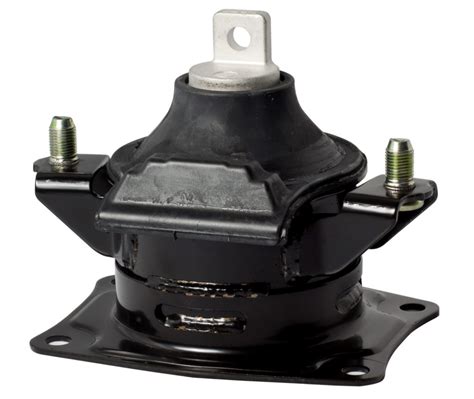Discover the essentials of bottom engine mounts: their importance, signs of failure, inspection tips, and replacement guidance for optimal vehicle performance.When it comes to your vehicle’s performance and comfort, the bottom engine mount plays a crucial yet often overlooked role. This essential component serves as a stabilizer that cushions the engine and minimizes vibrations, ensuring a smooth ride for you and your passengers. Understanding the function and importance of bottom engine mounts can save you from costly repairs and improve your driving experience. In this blog post, we’ll delve into what a bottom engine mount is, its significance in vehicle stability, the signs that may indicate it’s time for a replacement, how to inspect one effectively, and the steps needed to replace it if necessary. Whether you’re a car enthusiast or just someone looking to maintain your vehicle, this guide will provide valuable insights into keeping your engine mount in top condition.
What is a bottom engine mount?
A bottom engine mount serves as a critical component in a vehicle’s engine assembly, designed to secure and stabilize the engine to the chassis while absorbing vibrations and shocks generated during engine operation. This component, typically made from durable materials such as rubber or polyurethane, is strategically positioned at the lower part of the engine, allowing it to bear the weight and stress exerted by the engine and the forces generated during acceleration, deceleration, and cornering.
The significance of the bottom engine mount cannot be overstated, as its failure may not only lead to engine misalignment but also result in excessive wear on other engine components, ultimately compromising the overall performance and safety of the vehicle. When functioning correctly, the bottom engine mount ensures smooth engine operation, facilitating a seamless driving experience by minimizing engine movement and vibrations that can reach the cabin.
In conclusion, understanding the role of the bottom engine mount is essential for vehicle maintenance, as it not only affects engine performance but also impacts driver and passenger comfort, highlighting the need for regular inspections and timely replacements to avoid more severe mechanical issues down the line.
The importance of bottom engine mounts
Bottom engine mounts are critical components in a vehicle’s suspension and engine system, serving as a connection point between the engine and the vehicle’s chassis, and ensuring that vibrations and forces produced by the engine are effectively absorbed and managed, thereby enhancing both the performance and longevity of the vehicle. In essence, they play an integral role in maintaining the alignment of the engine, which is crucial for optimal performance, as a misaligned engine can lead to increased wear on other components and even catastrophic engine failure.
Beyond just vibration dampening, bottom engine mounts contribute significantly to the overall driving experience; without these mounts, a vehicle would experience excessive noise, harsh vibrations, and a generally uncomfortable ride, turning what should be a smooth journey into an ordeal fraught with discomfort. Furthermore, neglecting the condition of bottom engine mounts can lead to further complications, including damaging the transmission and exhaust systems, which are also reliant on the proper positioning of the engine.
Considering the crucial functions provided by bottom engine mounts, it becomes evident that their maintenance and replacement are key aspects of vehicle upkeep, ensuring both safety and comfort for drivers and passengers alike, and with regular inspections, drivers can prevent the many potential issues associated with failing mounts, thereby extending the life of their vehicle and enhancing its reliability. Therefore, it is imperative for vehicle owners to recognize the significance of bottom engine mounts and be proactive in ensuring they remain in good condition.
Signs of a failing bottom engine mount
Understanding the signs of a failing bottom engine mount is critical for maintaining the overall health and performance of your vehicle since these mounts play a vital role in securing the engine and isolating vibrations, thereby ensuring a smooth ride. One of the most common indicators that a bottom engine mount may be experiencing issues is the presence of excessive vibrations that can be felt throughout the cabin, particularly when the vehicle is idling or accelerating; these vibrations can make driving uncomfortable and may even be indicative of additional underlying problems.
Another significant sign to look out for is an unusual increase in noise, which can manifest as clunking, banging, or thudding sounds when the vehicle is in motion or when it shifts gears, as the bottom engine mount is designed to absorb shocks and reduce noise, and any compromise in its integrity will lead to these disruptive sounds penetrating the cabin. Additionally, if you notice any visible signs of deterioration, such as cracks or separations in the rubber or a misalignment of the engine’s positioning, this can also be an alarming indication that your bottom engine mount is indeed failing, necessitating immediate attention.
Moreover, paying close attention to the behavior of your vehicle during cornering is essential, as a failing bottom engine mount can cause the engine to shift unexpectedly, resulting in a feeling of instability and giving you a less confident driving experience; in extreme cases, this shift can lead to performance issues and even damage other components within the engine bay. For those who are not familiar with vehicle maintenance, recognizing these signs early can help prevent further complications that could lead to more extensi
How to inspect a bottom engine mount
Inspecting a bottom engine mount is a crucial process for maintaining the overall health of your vehicle, as this component plays an essential role in securing the engine to the frame and dampening vibrations that can affect performance and comfort, and to begin the inspection, it’s important to first ensure that the vehicle is parked on a flat surface and is secure, preferably using wheel chocks to prevent rolling.
Once the vehicle is safely positioned, you will want to examine the bottom engine mount visually, looking for any signs of wear or damage; this includes checking for cracks, separation, or excessive movement of the mount itself, as well as making sure that the surrounding areas are free from oil leaks or other fluids that could indicate further mechanical issues.
After a thorough visual inspection, it may be beneficial to use a pry bar or similar tool to apply a slight amount of pressure to the engine while observing the mount’s movements; during this step, you should pay close attention to any clunking sounds or unusual vibrations, as such indicators could signify that the bottom engine mount has begun to fail, at which point it
Replacing a bottom engine mount
When it comes to maintaining your vehicle’s engine performance and overall stability, the bottom engine mount plays a crucial role, serving as a pivotal connection point between the vehicle’s frame and the engine itself; thus, when it begins to wear out, which may manifest through excessive vibrations or misalignment of the engine, it becomes imperative to consider replacing it promptly to prevent more significant issues from arising.
The process of replacing a bottom engine mount generally involves a series of detailed steps that start with safely elevating the vehicle, carefully supporting the engine with a jack or supportive brace, and removing the necessary components that may obstruct access to the mount in question, such as the exhaust system or the cross member, thereby allowing you to work with ease in a designated space.
Once you have gained adequate access to the bottom engine mount, it is crucial to remove the old mount by unbolting it from its locations, which are typically situated on both the engine and the frame; after this, you can then clean the surface where the new mount will sit and install the replacement by following the manufacturer’s specifications to guarantee a snug fit, ensuring that all bolts are tightened to the recommended torque, thus securing the engine firmly back into place to restore optimal performance and ultimately prolong the lifespan of your vehicle’s engine.
Frequently Asked Questions
What is a bottom engine mount?
A bottom engine mount is a component that secures the engine to the vehicle’s chassis, helping to absorb vibrations and support the engine’s weight.
What are the signs of a failing bottom engine mount?
Signs of a failing bottom engine mount include excessive engine movement, increased vibrations, clunking noises during acceleration or braking, and misalignment of the engine.
How often should a bottom engine mount be inspected?
It’s a good practice to inspect the bottom engine mount during regular vehicle maintenance, especially if you notice any symptoms of wear or damage.
Can a damaged bottom engine mount affect vehicle performance?
Yes, a damaged bottom engine mount can lead to poor vehicle performance, including rough idling, decreased acceleration, and misalignment of other engine components.
How do you replace a bottom engine mount?
To replace a bottom engine mount, you typically need to lift the engine with a jack, remove any obstructing components, unbolt the old mount, and then install the new mount in reverse order.
What materials are bottom engine mounts made from?
Bottom engine mounts are usually made from rubber and metal, providing flexibility and strength to minimize engine vibration and movement.
Is it safe to drive with a broken bottom engine mount?
Driving with a broken bottom engine mount is not safe, as it can lead to severe engine misalignment and increased wear on other parts, potentially causing further damage.





